
Not much data stood out in the latest weekly grain export inspection report from USDA, out Monday morning. Grain prices are dialing in small losses as traders instead turned to the agency’s monthly supply and demand report later this week.
“Today’s export inspections report wasn’t really bearish, but it wasn’t good enough to keep the market from giving up early gains as traders recognize some of the risks headed into Thursday’s USDA production, supply and demand reports,” according to Farm Futures senior grain market analyst Bryce Knorr.
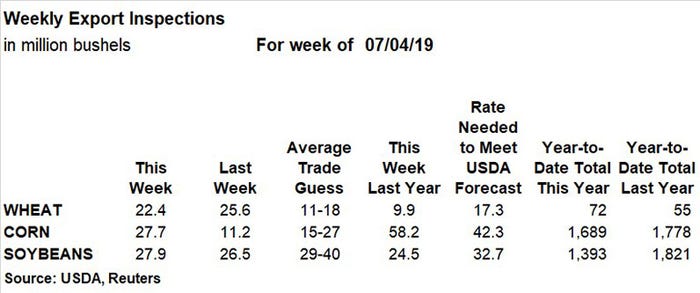
Corn inspections improved noticeably, moving up from the prior week’s anemic total of 11.2 million bushels up to 27.7 million bushels for the week ending July 4. That total also barely bested trade guesses, which ranged between 15 million and 27 million bushels. Marketing year totals for 2018/19 reached 1.689 billion bushels, down 5% from last year’s pace.
“All but 900,000 bushels of last week’s tally went to three big buyers: Japan, Mexico and Columbia,” Knorr says. “Higher prices and lack of supplies are turning some customers to seek grain from Brazil while others wait to find out how much the U.S. still have this fall. The pace of shipments could be slow enough to convince USDA to reduce its estimate of 2018 marketing year sales in Thursday’s report.”
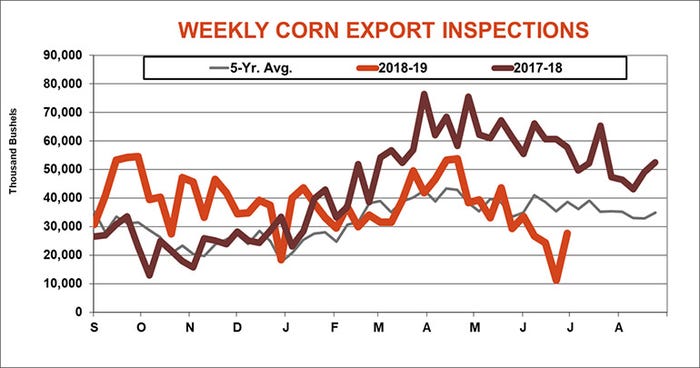
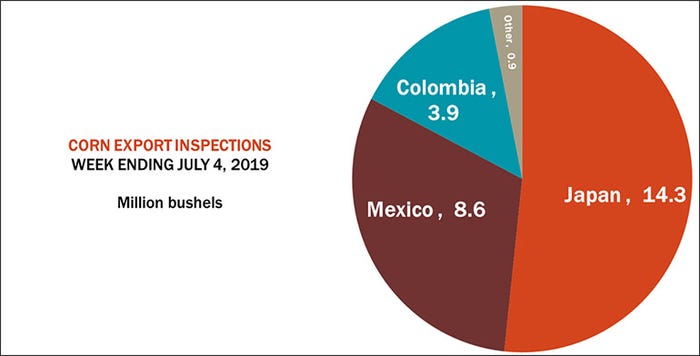
Soybean export inspections also trended slightly higher week-over-week after reaching 27.9 million bushels. That was below trade guesses, however, which ranged between 29 million and 40 million bushels. The weekly rate needed to match USDA forecasts inched up to 32.7 million bushels, with cumulative totals for the 2018/19 marketing year still 23.5% below last year’s pace after topping 1.393 billion bushels.
“With soybeans the problem is just the opposite of corn,” Knorr says. “China had 212 million bushels unshipped sales on the books according to last week’s sales tally but shipped out only 9.6 million bushels of those. U.S. trade talks with China are on again, but the latest inspections were a reminder that negotiations may continue to drag out into the fall, especially with little news coming in recent days.”
China’s 9.6 million bushels still led all destinations for U.S. soybean export inspections last week. Other top destinations included Japan (3.5 million), Mexico (3.2 million), Indonesia (2.9 million) and the Netherlands (2.5 million).
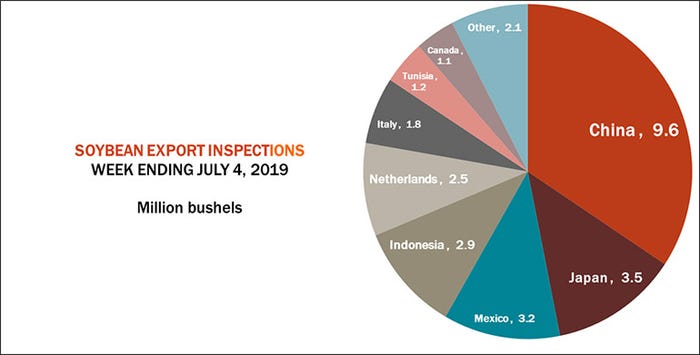
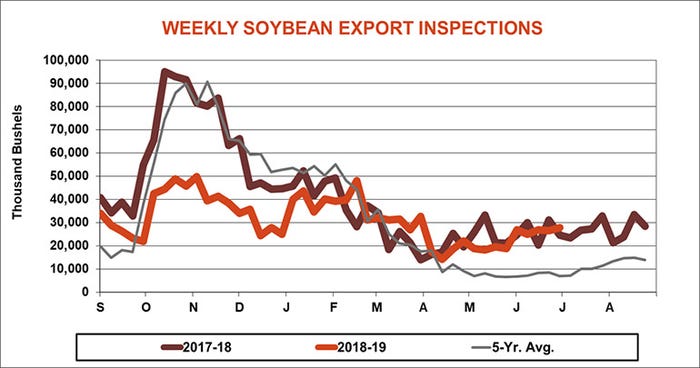
Wheat export inspections saw a slight decline last week, moving from 25.6 million bushels down to 22.4 million bushels. Still, that tally was enough to best trade expectations that ranged between 11 million and 18 million bushels, and it stayed ahead of the weekly rate needed to match USDA forecasts, now at 17.3 million bushels. Cumulative totals for the young 2019/20 marketing year reached 72 million bushels, versus 55 million bushels at this time last year.
“Wheat business was good, though most buyers except for the Philippines loading out single cargoes,” Knorr says. “The total for the week exceeded the rate needed through the marketing year to reach USDA’s forecast, which is a promising sign.”
The Philippines gathered up 6.0 million bushels in wheat export inspections last week. Other top destinations included Nigeria (3.1 million), Mexico (2.9 million), Algeria (2.2 million), Japan (2.2 million) and Iraq (1.9 million).
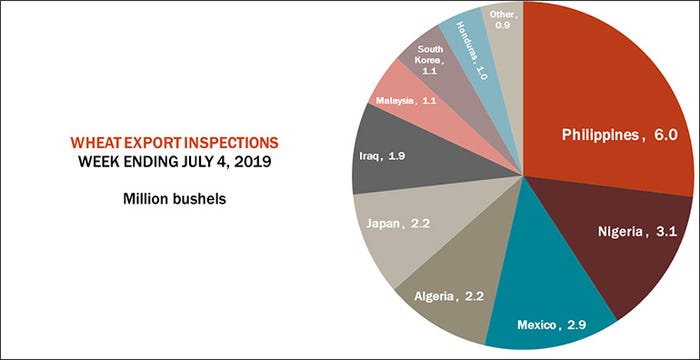
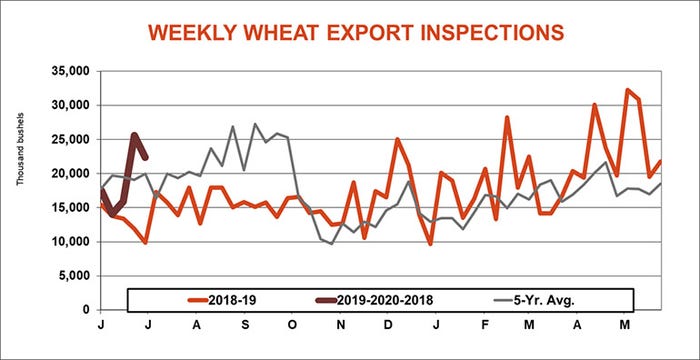
About the Author(s)
You May Also Like






